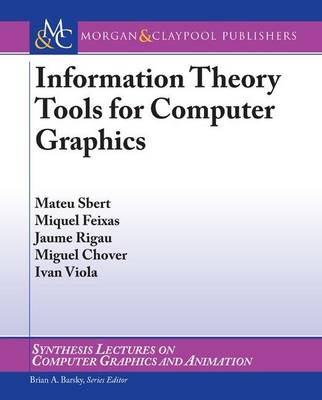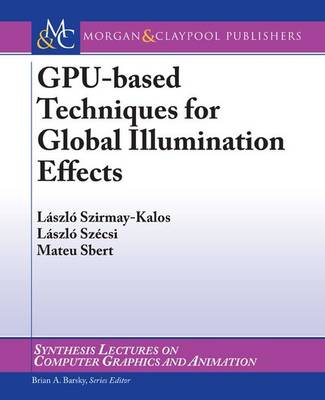Synthesis Lectures on Computer Graphics and Animation
3 total works
Information Theory Tools for Computer Graphics
by Mateu Sbert, Miquel Feixas, and Jaume Rigau
Published 9 September 2009
Information theory (IT) tools, widely used in scientific fields such as engineering, physics, genetics, neuroscience, and many others, are also emerging as useful transversal tools in computer graphics. In this book, we present the basic concepts of IT and how they have been applied to the graphics areas of radiosity, adaptive ray-tracing, shape descriptors, viewpoint selection and saliency, scientific visualization, and geometry simplification. Some of the approaches presented, such as the viewpoint techniques, are now the state of the art in visualization. Almost all of the techniques presented in this book have been previously published in peer-reviewed conference proceedings or international journals. Here, we have stressed their common aspects and presented them in an unified way, so the reader can clearly see which problems IT tools can help solve, which specific tools to use, and how to apply them. A basic level of knowledge in computer graphics is required but basic concepts in IT are presented. The intended audiences are both students and practitioners of the fields above and related areas in computer graphics. In addition, IT practitioners will learn about these applications.
GPU-Based Techniques for Global Illumination Effects
by Laszlo Szirmay-Kalos, Laszlo Szecsi, and Mateu Sbert
Published 1 January 2008
This book presents techniques to render photo-realistic images by programming the Graphics Processing Unit (GPU). We discuss effects such as mirror reflections, refractions, caustics, diffuse or glossy indirect illumination, radiosity, single or multiple scattering in participating media, tone reproduction, glow, and depth of field. The book targets game developers, graphics programmers, and also students with some basic understanding of computer graphics algorithms, rendering APIs like Direct3D or OpenGL, and shader programming. In order to make the book self-contained, the most important concepts of local illumination and global illumination rendering, graphics hardware, and Direct3D/HLSL programming are reviewed in the first chapters. After these introductory chapters we warm up with simple methods including shadow and environment mapping, then we move on toward advanced concepts aiming at global illumination rendering. Since it would have been impossible to give a rigorous review of all approaches proposed in this field, we go into the details of just a few methods solving each particular global illumination effect. However, a short discussion of the state of the art and links to the bibliography are also provided to refer the interested reader to techniques that are not detailed in this book. The implementation of the selected methods is also presented in HLSL, and we discuss their observed performance, merits, and disadvantages. In the last chapter, we also review how these techniques can be integrated in an advanced game engine and present case studies of their exploitation in games. Having gone through this book, the reader will have an overview of the state of the art, will be able to apply and improve these techniques, and most importantly, will be capable of developing brand new GPU algorithms.
Information Theory Tools for Image Processing
by Miquel Feixas, Anton Bardera, Jaume Rigau, and Qing Xu
Published 1 March 2014
Information Theory (IT) tools, widely used in many scientific fields such as engineering, physics, genetics, neuroscience, and many others, are also useful transversal tools in image processing. In this book, we present the basic concepts of IT and how they have been used in the image processing areas of registration, segmentation, video processing, and computational aesthetics. Some of the approaches presented, such as the application of mutual information to registration, are the state of the art in the field. All techniques presented in this book have been previously published in peer-reviewed conference proceedings or international journals. We have stressed here their common aspects, and presented them in an unified way, so to make clear to the reader which problems IT tools can help to solve, which specific tools to use, and how to apply them. The IT basics are presented so as to be self-contained in the book. The intended audiences are students and practitioners of image processing and related areas such as computer graphics and visualization. In addition, students and practitioners of IT will be interested in knowing about these applications.


